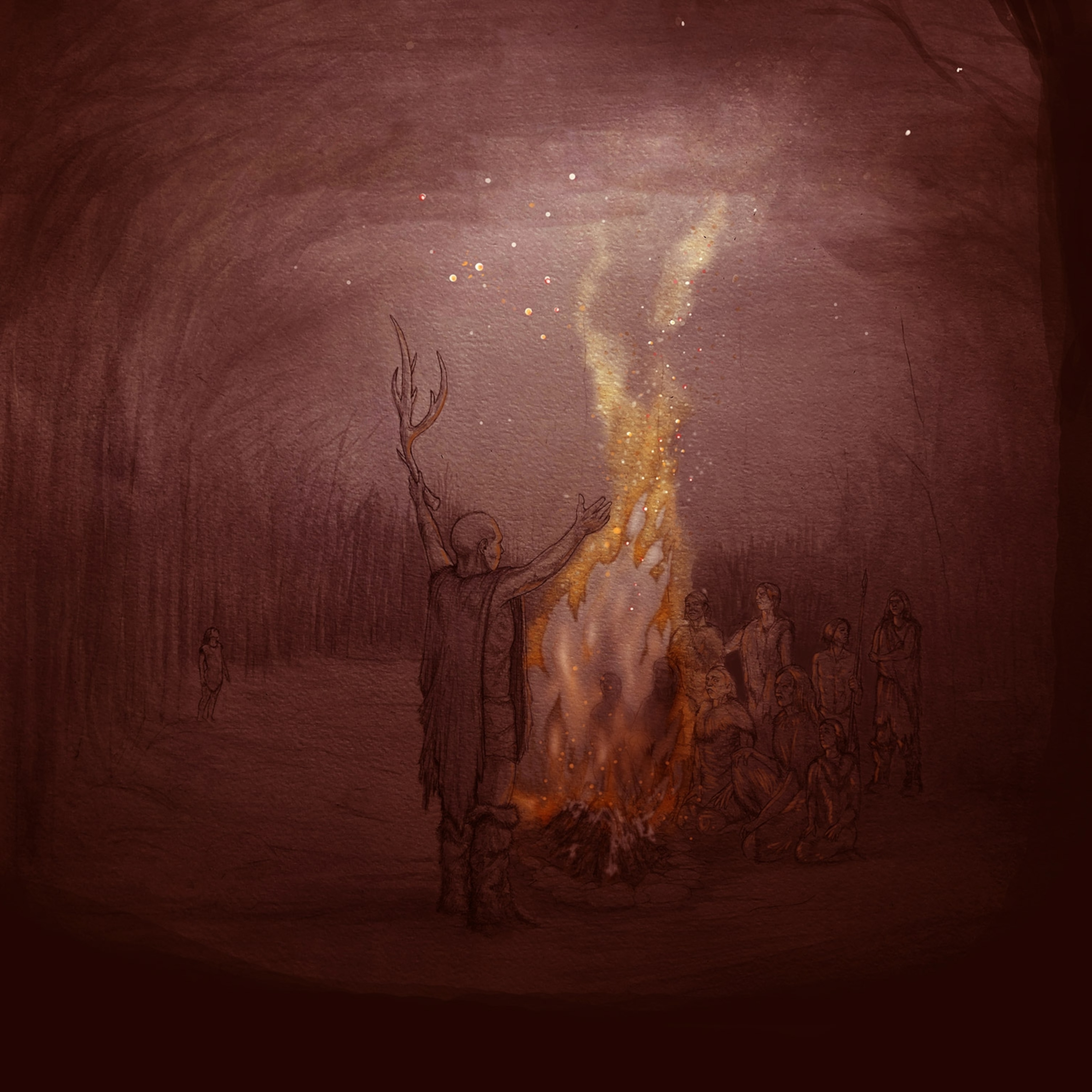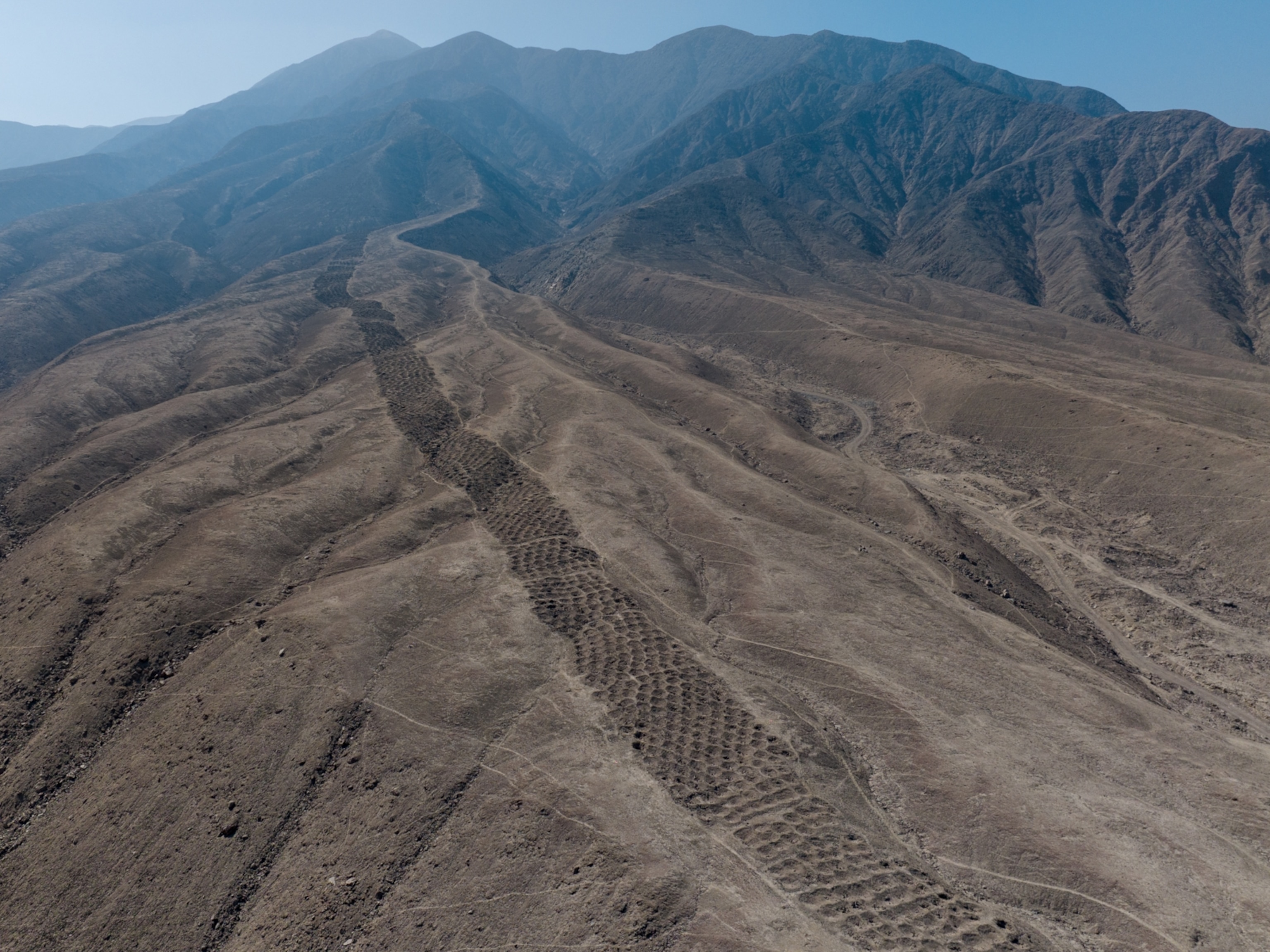For capuchin monkeys at Brazil’s Serra da Capivara National Park, tool use is a tradition going back millennia: A new study finds that these primates have used stone tools to process their food for the past 3,000 years, making it the oldest non-human site of its kind outside of Africa.
The site, described today in Nature Ecology & Evolution, contains layers of rounded stone cobbles that capuchins in the area produced over time to crack open seeds and nuts. Other non-human tool sites have been documented in and out of Africa; the oldest one known, a chimpanzee site in Côte d'Ivoire, is more than 4,000 years old. But Serra da Capivara’s tools alone show long-term variation, a milestone for archaeology outside the human lineage. There, the stone tools vary in size over time, suggesting that the area’s capuchins may have been adapting their tool use to eat foods of varying hardnesses.
“What is really interesting about the ability to conduct archaeological excavations on primate tool-use sites is that we as a species are not unique in having a really fine-grained and detailed archaeological record,” says study coauthor Tomos Proffitt, a postdoctoral fellow at University College London. “This capuchin excavation shows that this species of primate in Brazil has its own individual archaeological record; they have their own antiquity to their tool use.”
Understanding capuchin tool use could help reveal the origins of the practice in other primate groups, including the earliest members of the human lineage. The oldest known stone tools—deliberately flaked blades—date back 3.3 million years and are attributed to either Australopithecus afarensis or Kenyanthropus platyops, two ancient species of human relatives.

But before early hominins intentionally flaked off pieces of stone to use as tools, it’s thought they used unmodified stone cobbles to process foods, much like the Serra da Capivara capuchins do today. By studying the capuchins’ tool use, researchers now have a better sense of what to look for at other, older sites.
(Can Monkeys Befriend People? Experts Weigh In.)
“I am always excited when new evidence of the complexity of animal behavior comes to light,” says Erin Marie Williams-Hatala, an evolutionary anthropologist at Chatham University who studies the biomechanics of early stone tool use. “I think that we were distracted for years—for decades—by creating these false narratives about what distinguishes us from other primates.”
Percussive blows
For a long time, tool use was considered a quintessentially human activity, but decades of research has exposed that as simply untrue. Several bird species wield sticks and twigs as tools; chimpanzees can craft “spears” to hunt mammals. Orangutans have hit on an ingenious solution for hydration: They chew up plant matter and use it as a sponge, soaking up hard-to-reach water and then squeezing it into their mouths. (Find out more about non-human animal tool use.)


So, too, with the capuchins of Serra da Capivara, which still today smash open the tough husks of cashews with rounded quartzite cobbles, which range in size from about an inch wide to roughly the size of a human fist. As they pound the cashews with rocks—either against the roots of cashew trees or on stone “anvils”—they leave behind telltale pockmarks, stained brown from the cashew husks, that are evidence of their percussive blows.
For centuries, locals and visitors to Brazil had told stories of tool-using capuchins, and for decades, scientists had known that capuchins could wield tools in captivity and in laboratory tests. But they didn’t formally document the behavior in the wild until 2004.
“Local people already knew for a long time,” says lead study author Tiago Falótico, a primatologist at the University of São Paulo.
About a decade ago, the research team behind the new study set out to excavate sites in Serra da Capivara, in an attempt to see how far back the tool use went. In 2016, the researchers revealed that at one site, there’s unambiguous evidence for capuchin stone tools dating to about 700 years ago. But there was no reason there couldn’t be older materials, so the team kept digging.
Change in diet?
After four phases of excavation, the team had dug down through about 3,000 years of sediments, based on the radiocarbon dating of charcoal in the soil layers—and they were still finding telltale capuchin stone tools. Intriguingly, Falótico and Proffitt’s team also noticed changes in the tool use. Until sometime about 560 years ago, the site’s capuchins were wielding relatively tiny cobbles that sustained high impact damage—a sign that they were often missing their targets. The researchers think that, at the time, capuchins were eating smaller foods.
Ever since, the Serra da Capivara capuchins have wielded far larger stones, implying that they were going after harder foods. And for the last 300 years or so, Falótico’s excavations showed, capuchins have settled into their now-familiar tool size, consistent with their current strategy of bashing off cashews’ tough husks.
Why did the area’s capuchins change what they were eating? Proffitt and Falótico can’t say for sure. Perhaps different groups of capuchins, each with their own distinct tastes, lived in this patch of Serra da Capivara over the millennia. It’s also possible that the changes simply reflect shifts in the site’s community of plants.
Williams-Hatala, who wasn’t involved with the paper, points out that we still don’t yet know for sure what the ancient capuchins were eating. The older tools lack the telltale cashew residue, which might mean that those capuchins weren’t eating cashews, or that the cashew residue simply broke down over time. She also adds that the capuchins’ overall tool strategy—percussion—doesn’t change markedly over time, so she cautions against reading too much into the site’s variation.
“The object that’s being percussed changes over time, but whether that constitutes a change in tool function, or behavioral variation, I would say it does not,” she says.
Proffitt and Falótico have more studies planned, including a broader look at how to distinguish between different types of non-human stone tools. That way, researchers can more readily ascribe stone tools at different sites to their wielders—and understand the evolutionary underpinnings of tool use across primates. After all, not all groups of capuchins use stone tools—so why do the ones at Serra da Capivara and at sites in Panama?
“What is it about the evolutionary history, the ecology, the social systems of these populations of capuchins that are removed 38 million years [from sharing common ancestry with humans]?” says Brendan Barrett, a postdoctoral researcher at the Max Planck Institute for Evolutionary Anthropology. “It’s likely an independent evolution of this.”
Above all, the researchers stress the sheer variety in primate tool use—and the non-inevitability of capuchins advancing as humans’ ancestors did. For instance, capuchins sometimes break off stone flakes by accident as they wallop cashews, but they’ve never been observed in the wild using those flakes as cutting tools, a key step in human evolution.
“If you define ‘Stone Age’ as a time period when individuals are using stones as tools, capuchins have their own Stone Age, that’s not a problem,” Proffitt says. “Whether that Stone Age will develop into something far more complex, I have absolutely no idea.”









